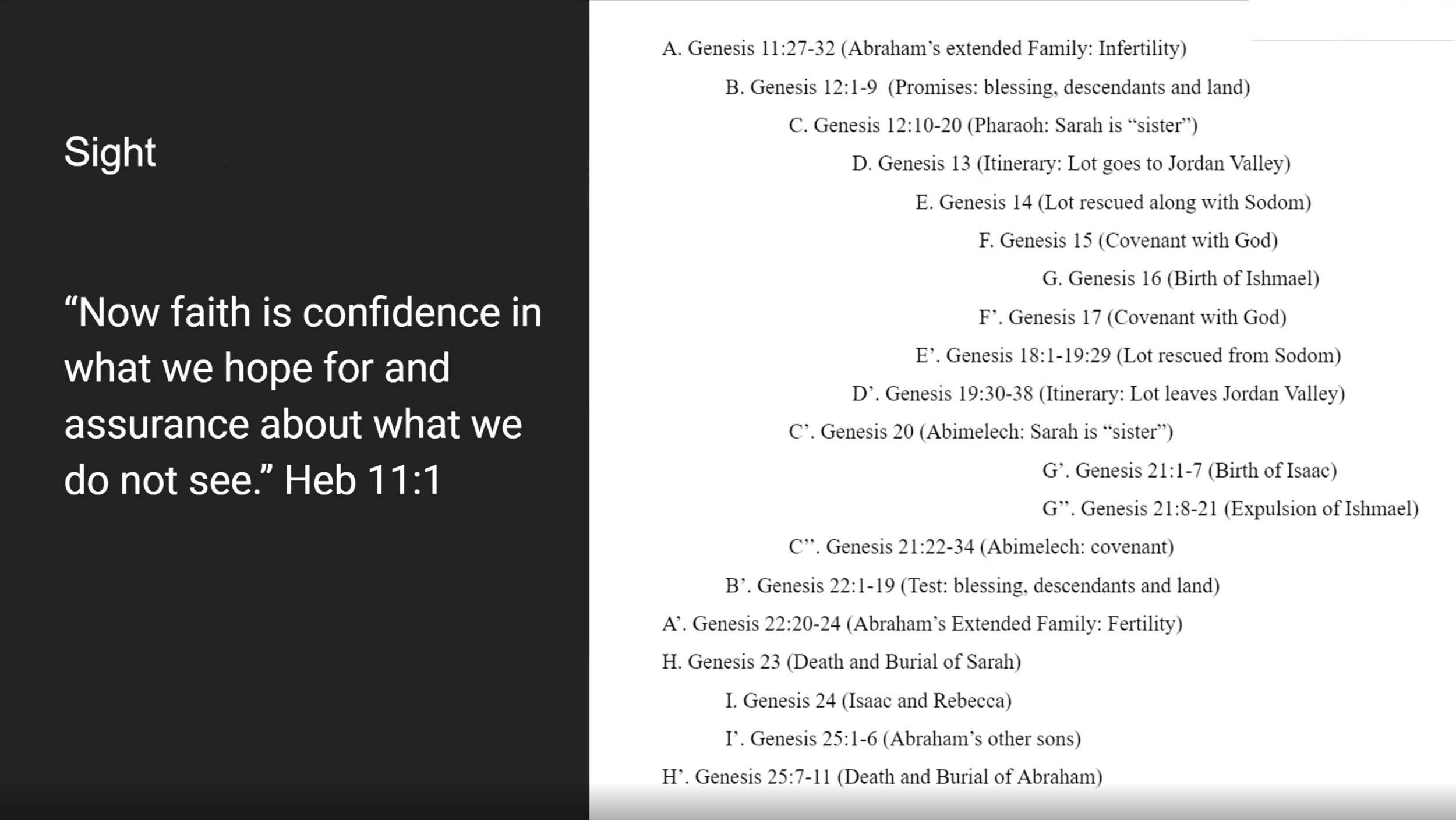Micah Schuurman: Biblical Aesthetics, week 3
BIBLICAL AESTHETICS
How the Bible and Christian Faith teach us to see, hear, touch, taste, and smell differently
Old Testament stories like the story of Abraham contain these elements:
Repetition and Comparison (briefly reviewed)
Humor (briefly reviewed)
Sight (and Identity, which is a form of sight: how we see ourselves). God needed to work on Abraham’s sight. As part of this, he needed to value Sarah and see her as the one through whom God’s promise would be fulfilled rather than through Lot or Ishmael.
New Testament stories contain these elements as well:
Repetition (with differences): NT stories often echo parts of OT stories, inviting us to compare & contrast. Example: Jesus vs Moses in Matthew’s Gospel, Hannah vs Mary in Luke’s Gospel
Showing vs telling (speaking in parables)
Two Story-Telling Techniques of Jesus:
“Sudden Change of Perspective” — like Nathan & David (changing from judge to defendant), or like the Lost Sheep / Coin / Son sequence that pulls hearers in and ultimately indicts the Pharisees
“That’s not how the world works” — Parable of the Weeds/Tares is bad gardening advice
